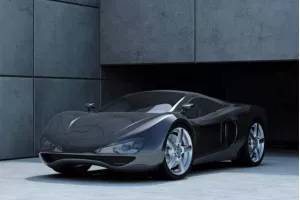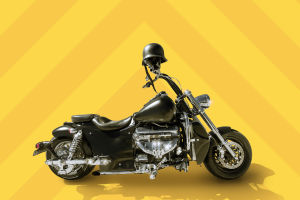Some people like fast cars, others get excited by fast planes, but in this article, we get excited by fast boats! There’s nothing quite as exciting as hitting the open water for a cruise around at top speed, and this thrilling hobby has been enjoyed for over a century now!
Motorboats, which are often referred to as powerboats, refer to relatively small watercrafts which are moved across the water by either an electric, or else an internal combustion engine. They are manufactured in a range of sizes from a one passenger miniature craft to a 30 meter-plus seagoing vessel. Generally speaking, however, the majority of them provide space for up to six riders. Here are six little-known facts about power boats and what makes them so cool!
1. The Longer The Boat, The Faster It Is
The longer the boat, the faster it is. It seems counterintuitive, right? Wrong! Power boats come in all lengths, but for the most part, longer power boats are actually faster than their smaller, shorter companions. Longer boats are more difficult to manoeuvre, though.
2. Saltwater Can Damages Power Boat Engines
Your boat is meant to be in the water, right? Well, yes and no. Your boat is specifically designed to go into the water, but the reality is that saltwater will eventually clog up your engine and require you to undertake some serious repair work if you don’t look after your power boat properly. Fresh water, though? Not a problem.
3. Riding the Waves
Motor boating is a serious sport and it is important to find out all you can about the subject, before taking it any further, or even purchasing your own boat. Normally, motorboats are recreational boats which are designed for anyone who wants to take part in fun sports such as water skiing, skin diving, swimming, etc., as well as just good old fashioned cruising at one’s leisure. They are also used for amateur and professional sports racing, as well as for navigation and piloting contests.
4. What Do Motor Boat Fans Go For?
The answer to that is three words: style, comfort, and speed. Fans can enjoy the extremes of riding through the glorious blue waves at 35 knots, to chilling out on a sun pad on a beautiful sun-kissed enclave, enjoying a glass of wine, and still being able to get ashore in time for dinner. This hobby and much-loved pastime, is an excellent way to connect with the water, and it is not too difficult to get to know the ropes.
5. Speed Boats May Flip Over at Extreme Speeds
A speed boat is unlikely to flip over at moderately high speeds. So, 40 or 50 mph (64 or 80 kph) is not a safety risk unless you are braving a storm or rogue waves. Having said that, anything closer to 100 mph or ~160 kph (87 knots) is not a safe speed for recreational speed boats. Speeds over 150 mph or 241 kph (130 knots) are unsafe for amateurs and those with intermediate skills. Even racers with decades of experience have failed to control their boats at extremely high speeds. And their speed boats have flown and flipped, leading to fatalities. Extremely high speeds leading to gliding expose your boat to aerodynamics. You and the boat are no longer limited to the effects of the center of gravity and buoyancy. Your boat must endure the headwind or crosswind, depending on the conditions. Else, the speed boat may flip over.
6. Rogue Waves Can Capsize Most Speed Boats
Unlike wakes, rogue waves can capsize, topple, or flip over speed boats regardless of the other factors. Rogue waves don’t spare even large and heavy ships sometimes, so expecting lenience for a lightweight speed boat is unwise. Also, a speed boat is vulnerable to strong waves and other conditions, including tides. Extreme speeds, sharp turns, and raised trim or bow are concerns even in normal circumstances. These issues can become hazardous in wild waves, tides, and storms.


